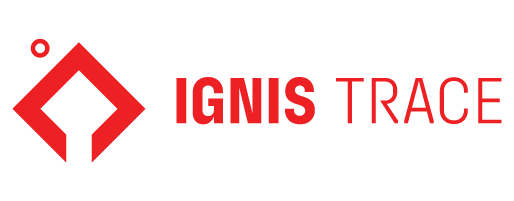Heavy-duty industrial heating systems are specially designed heating solutions built to operate under extreme industrial conditions where standard systems often fail. These systems are engineered to withstand high temperatures, mechanical stress, moisture, chemical exposure, and other harsh environmental factors. They are widely used in sectors such as petrochemicals, oil and gas, power generation, mining, marine operations, and large-scale manufacturing facilities, where reliability and safety are non-negotiable.
Unlike general-purpose industrial heating systems, heavy-duty solutions use specialized materials and technologies—like heavy-duty cable and explosion-proof components—to ensure long-term durability and operational stability. Their primary functions include maintaining process temperatures, preventing freezing in piping systems, and supporting consistent thermal regulation across large equipment. Thanks to their advanced design, industrial heating systems of this class also contribute to energy savings, process efficiency, and workplace safety. As industries continue to modernize and optimize production, heavy-duty systems play a crucial role in ensuring uninterrupted operations.
What Are Heavy-Duty Industrial Heating Systems?
Heavy-duty heating systems are robust thermal solutions engineered to meet the rigorous demands of industrial environments. These systems are built with high-resistance materials and components that can operate continuously under high temperatures, corrosive atmospheres, vibrations, and other physically demanding conditions. What differentiates them from standard heating solutions is their enhanced durability and reliability, making them essential for maintaining critical temperature levels in complex processes. Whether it’s for maintaining pipeline temperatures or ensuring heat consistency in chemical tanks, these systems are built to last and deliver performance without compromise.
Within the broader category of industrial heating systems, heavy-duty setups often incorporate heavy-duty cable technology and smart control systems to handle high-output heating loads efficiently. Their application is not only about heat generation but also about controlling that heat precisely across different equipment and environments. These systems are customized based on the needs of each facility and comply with safety regulations, including the use of explosion-proof components where necessary. As part of modern industrial heating systems, they offer scalable and modular designs to fit a wide range of applications.
Components of Heavy-Duty Industrial Heating Systems
Every heavy-duty heating system is composed of multiple integrated components working together to provide reliable and consistent heat in industrial applications. These components are specifically engineered to endure severe environments where extreme temperatures, vibrations, moisture, and chemical exposure are present. Among the essential elements are resistance cable systems, control panels, thermostats, insulation materials, protective covers, and explosion-proof (Ex-Proof) equipment. Each plays a vital role in ensuring operational efficiency, safety, and longevity of the entire system.
Unlike basic industrial heating systems, heavy-duty setups are designed with redundancy and performance optimization in mind. For example, heavy-duty cable is used not only for power transmission but also as a heat-generating element with high durability. Advanced control panels regulate temperatures precisely, while insulation minimizes heat loss and improves energy efficiency. These features make industrial heating systems suitable for complex environments such as oil rigs, power plants, and refineries. To better understand how these systems function, it's important to explore each component individually.
Resistance Cable Systems
Resistance cable systems are one of the core elements in heavy-duty heating systems, providing direct and efficient heat through electrically resistive conductors. These cables are designed to operate in environments with high thermal and mechanical stress, ensuring consistent heat delivery even under extreme industrial conditions. Typically, heavy-duty cable used in these systems features reinforced insulation and corrosion-resistant materials, making it ideal for applications like pipeline tracing, tank heating, and frost protection. Integrated into broader industrial heating systems, resistance cables offer a reliable solution where standard heating elements may fail. Their ability to maintain precise temperatures over long distances makes them indispensable for critical process industries.
Control Panels and Thermostats
Control panels and thermostats are essential components of heavy-duty heating systems, responsible for temperature regulation, system monitoring, and operational safety. These devices ensure that heating levels remain within set parameters, preventing overheating and energy waste. Advanced models offer programmable settings, real-time diagnostics, and remote access, making them highly adaptable to complex industrial environments. Integrated with heavy-duty cable networks, they manage heat output efficiently while responding to environmental changes. In modern industrial heating systems, intelligent control technology not only improves performance but also contributes significantly to energy optimization and process stability, especially in industries with fluctuating temperature requirements.
Insulation Materials and Protective Covers
Insulation materials and protective covers are vital for preserving thermal efficiency in heavy-duty heating systems. These components help retain generated heat, reduce energy losses, and shield sensitive system parts from external hazards such as moisture, dust, and chemicals. In applications where heavy-duty cable is exposed to harsh environments, insulation ensures longevity and consistent performance. Protective covers add an extra layer of safety, especially in areas with high foot traffic or risk of mechanical damage. When properly implemented, these materials significantly boost the overall effectiveness of industrial heating systems, making them safer, more efficient, and cost-effective over the long term.
Ex-Proof (Explosion-Proof) Equipment
Explosion-proof (Ex-Proof) equipment is a critical safety feature in heavy-duty heating systems, especially in hazardous industrial environments like chemical plants, oil refineries, and mining operations. These components are specifically designed to prevent ignition of flammable gases or dust by containing sparks or heat within sealed enclosures. When combined with heavy-duty cable and robust insulation, they ensure that heating operations can continue safely in classified zones. This type of protection is often mandatory for compliance with international safety standards. As part of advanced industrial heating systems, Ex-Proof equipment not only safeguards personnel and infrastructure but also guarantees uninterrupted thermal performance in high-risk areas.
Energy Efficiency in Heavy-Duty Heating Systems
Modern heavy-duty heating systems are designed not only for durability and performance but also with a strong focus on energy efficiency. These systems operate continuously in demanding environments, so minimizing energy consumption is crucial for operational cost savings. High-quality heavy-duty cable solutions reduce energy losses during heat transmission, while insulation and smart controls ensure that heat is delivered only where and when it’s needed. Advanced control panels and thermostats manage temperature levels precisely, eliminating energy waste caused by overheating or inconsistent performance.
Unlike outdated setups, today’s industrial heating systems use automation and real-time monitoring to adapt heating output to fluctuating environmental or process conditions. Features such as programmable timers, load balancing, and zone-specific control all contribute to optimized energy usage. As energy prices continue to rise, the efficiency of industrial heating systems plays a pivotal role in reducing total operational costs and supporting sustainability initiatives across industries. Choosing energy-efficient equipment is no longer optional—it’s a strategic investment.
Advantages of Heavy-Duty Heating Systems
Heavy-duty heating systems offer several key advantages that make them the preferred choice for demanding industrial environments. First and foremost, they are engineered for reliability and durability, operating continuously under extreme temperatures, vibration, and chemical exposure without degradation. This makes them ideal for mission-critical applications where system failure is not an option. Their modular and customizable design allows them to be tailored for specific industrial processes, making them more versatile than many standard industrial heating systems.
Another significant benefit is their superior energy efficiency. Systems that use heavy-duty cable, high-quality insulation, and automated control technologies significantly reduce energy waste while maintaining consistent heat output. This results in lower operating costs and better overall system performance. Additionally, these systems enhance safety with explosion-proof components and integrated monitoring tools that help detect issues before they cause downtime. Compared to conventional industrial heating systems, heavy-duty solutions require less frequent maintenance and offer a longer service life, providing a better return on investment over time.
Applications of Heavy-Duty Heating Systems
Heavy-duty heating systems are widely used across a variety of industries that demand consistent thermal performance in harsh environments. These include oil and gas, petrochemical, mining, marine, power generation, and food processing sectors. In such settings, these systems are essential for pipe freeze protection, tank heating, valve temperature maintenance, and process heating. Their ability to function reliably in extreme conditions ensures that critical operations continue uninterrupted, even in the most challenging locations. The use of heavy-duty cable allows for durable and flexible installations along long pipelines, large vessels, and structural components.
In addition to heavy industries, industrial heating systems are also utilized in pharmaceutical production, chemical processing plants, and water treatment facilities—anywhere precise thermal control is vital. In these environments, heavy-duty heating systems help maintain optimal process temperatures, protect sensitive equipment, and ensure product quality. Their integration with smart monitoring and explosion-proof safety features further extends their use into high-risk zones. As energy efficiency and operational reliability become more important, these solutions are playing a growing role in both new infrastructure and system upgrades in industrial heating systems worldwide.
Maintenance and Fault Prevention Methods in Heavy-Duty Heating Systems
Even though heavy-duty heating systems are designed for reliability and long-term operation, proactive maintenance is essential to prevent unexpected failures and ensure optimal performance. Regular system inspections, resistance checks, and temperature calibration are necessary to identify wear and potential risks before they become costly breakdowns. These practices are especially important in facilities using heavy-duty cable, where prolonged exposure to high temperatures or harsh chemicals can degrade insulation or connectors over time.
In modern industrial heating systems, fault prevention strategies now rely heavily on automation and remote monitoring technologies. With smart control panels and sensors, maintenance teams can detect fluctuations in power, cable resistance, or temperature in real time. These features make predictive maintenance not only possible but efficient, allowing for quick interventions before performance drops or safety is compromised. As a result, industries using industrial heating systems benefit from increased uptime, lower maintenance costs, and enhanced safety compliance.
Periodic Maintenance Planning
Establishing a structured periodic maintenance plan is essential for keeping heavy-duty heating systems operating at peak efficiency. Regular inspections help detect early signs of wear in components such as thermostats, control panels, and especially heavy-duty cable, which may degrade over time under high temperatures and harsh conditions. A well-organized maintenance schedule reduces the risk of unplanned downtime, optimizes energy use, and extends equipment life. For facilities using advanced industrial heating systems, maintenance planning should include thermal imaging, resistance testing, and log analysis to ensure all elements function within safe and efficient parameters. Incorporating this approach not only protects assets but also contributes to long-term operational savings.
Digital Monitoring Systems for Fault Detection
Digital monitoring systems are a game-changer in maintaining heavy-duty heating systems, enabling real-time fault detection and performance tracking. These technologies allow operators to monitor key indicators like temperature fluctuations, resistance changes, and power anomalies—often before a failure occurs. Integrated into advanced industrial heating systems, these systems enhance predictive maintenance strategies and reduce unplanned downtime. When used alongside heavy-duty cable installations, digital monitoring can identify specific cable sections with potential issues, streamlining repair efforts. This not only improves safety and system reliability but also helps extend the life of critical infrastructure in high-risk industrial environments.
Considerations When Selecting Heavy-Duty Heating Systems
Selecting the right heavy-duty heating system requires a comprehensive understanding of the operating environment and process requirements. Key factors to evaluate include ambient temperature ranges, exposure to chemicals or moisture, risk of explosion, and the specific heat output needed for the application. Materials used in heavy-duty cable, insulation quality, and compliance with safety certifications—such as ATEX or IECEx for explosive zones—are critical for ensuring long-term reliability. It’s also essential to determine whether the heating system will need to be modular or custom-built for unique installation challenges.
Another important consideration is compatibility with control and monitoring systems. Modern industrial heating systems benefit greatly from integration with smart control panels, remote diagnostics, and digital fault detection technologies. This not only improves efficiency but also reduces maintenance efforts. Budget and long-term energy consumption should also be assessed, as investing in energy-efficient components may offer lower total cost of ownership. Whether upgrading existing industrial heating systems or installing a new solution, careful planning ensures safety, performance, and return on investment

 Türkçe
Türkçe



